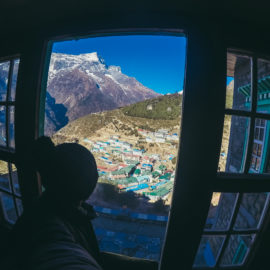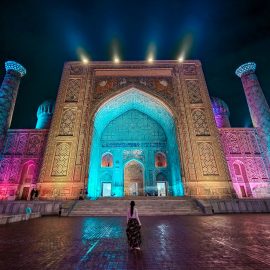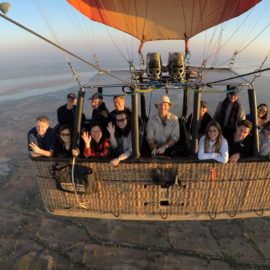As some of you may know I am on quest to travel all the 193 UN-recognized countries in the world, so after 1 week in Seoul, South Korea, I flew to Mongolia my country number 88. When I first contemplated visiting Mongolia, I was filled with uncertainties. The thought of planning a solo trip to a country known for its rugged terrain and extreme weather was daunting. However, my passion for exploration and the allure of Mongolia’s beauty spurred me on. So if you are looking to have an adventure I hope my 7 days in Mongolia travel itinerary helps you.
Mongolia, often referred to as the “Land of the Eternal Blue Sky,” is a land of contrasts. Its history is steeped in nomadic traditions, with the Mongolian Empire once being the largest contiguous empire in history, spanning from Eastern Europe to the Sea of Japan. Today, Mongolia is known for its stunning landscapes, from the vast Gobi Desert to the snow-capped mountains of the Altai Range.
Despite its harsh winters and sparse population, Mongolia’s beauty is undeniable. The country’s nomadic culture and rich history add a layer of intrigue that has drawn me to explore its landscapes and learn about its people.
In this blog post, I will share my 7-day itinerary for exploring Mongolia as a solo traveler, from the bustling streets of Ulaanbaatar to the serene landscapes of Terelj National Park and the Gobi Desert. Join me as I recount my adventures and discoveries in this beautiful, cold (only during winter), and captivating country.
7 Days Mongolia travel itinerary
I am on the mission to travel all the 195 countries in the world (not in a race, more like in a slow and steady fashion) and recently completed 108 countries. It was a big milestone because I work hard, save for these trips and share what I know here on the blog for free so fellow travellers like you can benefit from it. Pls feel free to return the favour by ordering my new book on Amazon – A solo female traveler’s story: from Kathmandu to finding peace in 100+ countries
Day 1: Arrival in Ulaanbaatar
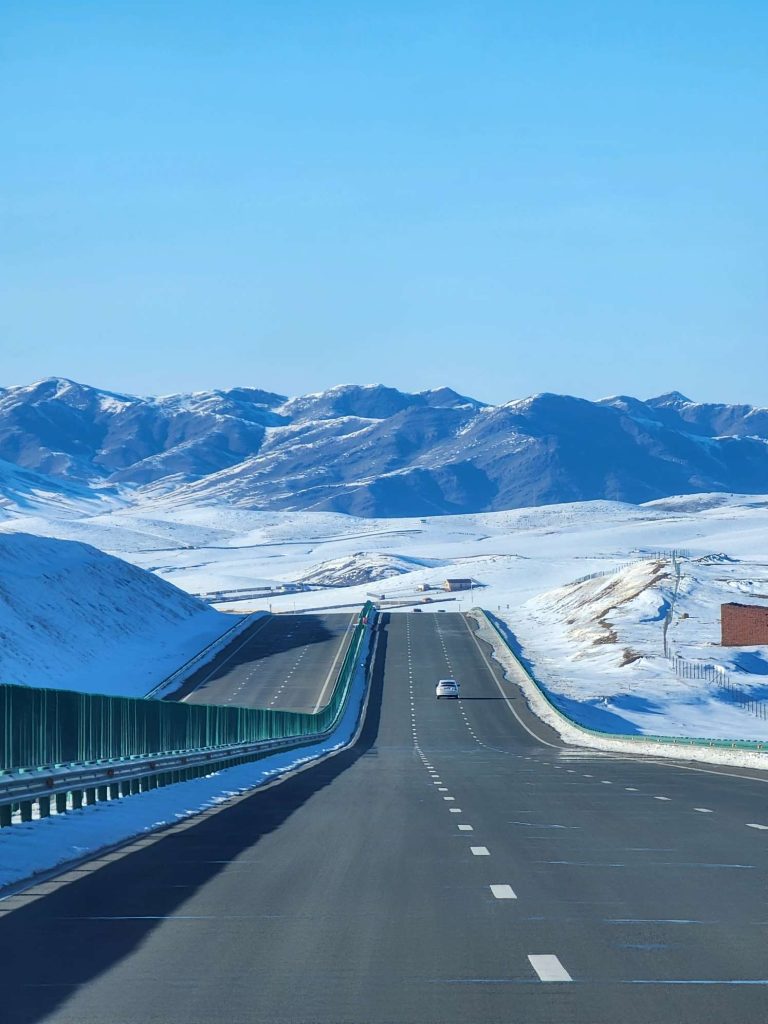
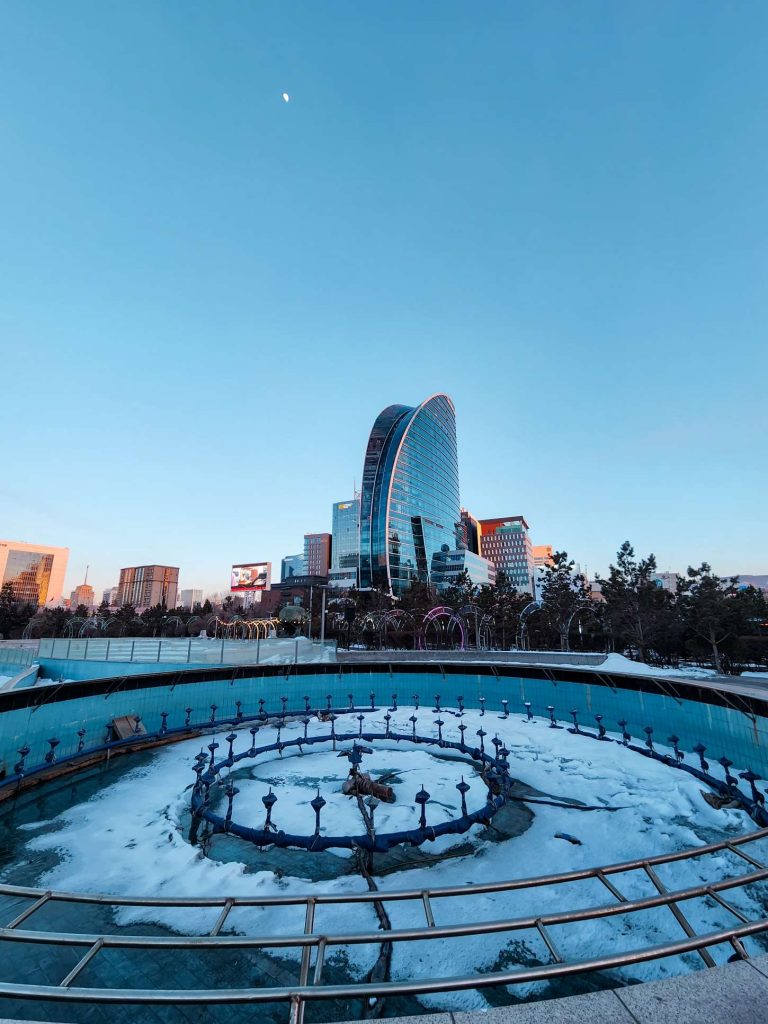
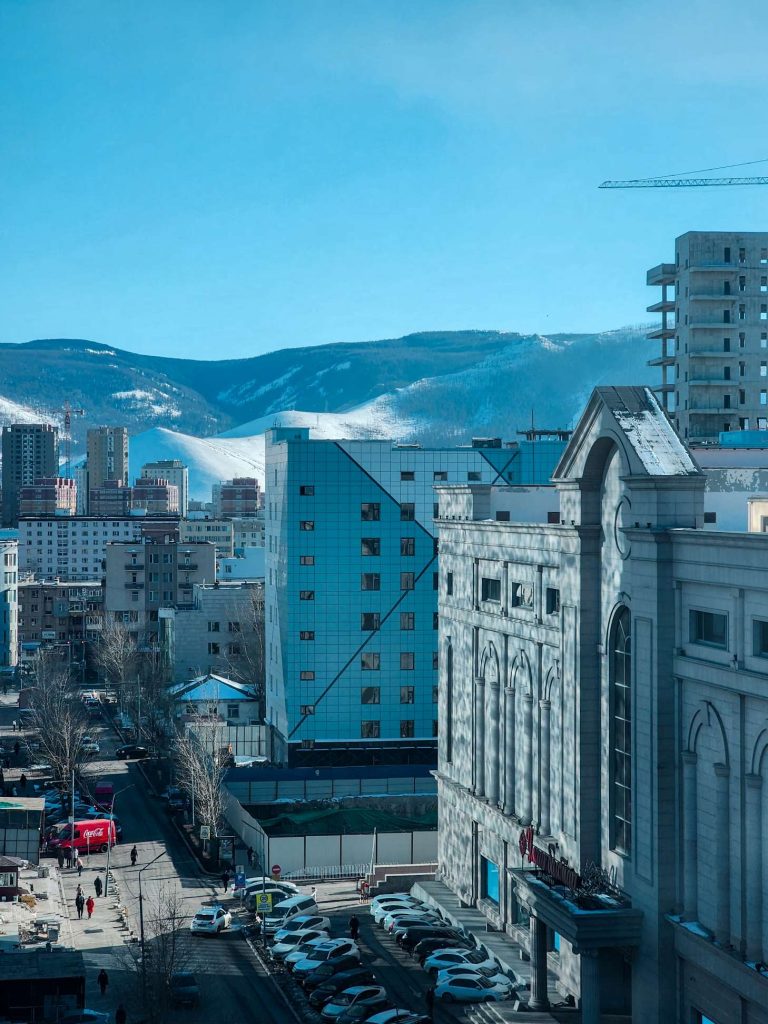
My adventure in Mongolia began with afternoon arrival at Chinggis Khaan International Airport. As I stepped off the plane, the crisp Mongolian air greeted me, setting the stage for the journey ahead. To reach the city center, I decided to book an online shuttle, as there was no accurate schedule for the bus, but the shuttle bus took three hours due to local celebration/traffic jam. The shuttle ride provided me with my first glimpses of Ulaanbaatar, a city where modernity meets tradition against a backdrop of rolling snowy hills.
Upon reaching my accommodation and checking in, I took some time to rest and recharge after the journey. I then ventured outside into the city center for quick stroll & dinner. Ulaanbaatar’s bustling streets were alive with activity even at -5 degrees, offering a fascinating mix of old and new. Found a noodle place near my accommodation for dinner which was perfect.
For accommodation, I recommend using booking.com and sorting with price, then consider the ones with highest reviews plus within 1km of center/old town.
For tours, I recommend using get your guide and walking tours available in most places.
For weekend trip, I went with Gaya more info below.
Day 2: Explore Ulaanbaatar
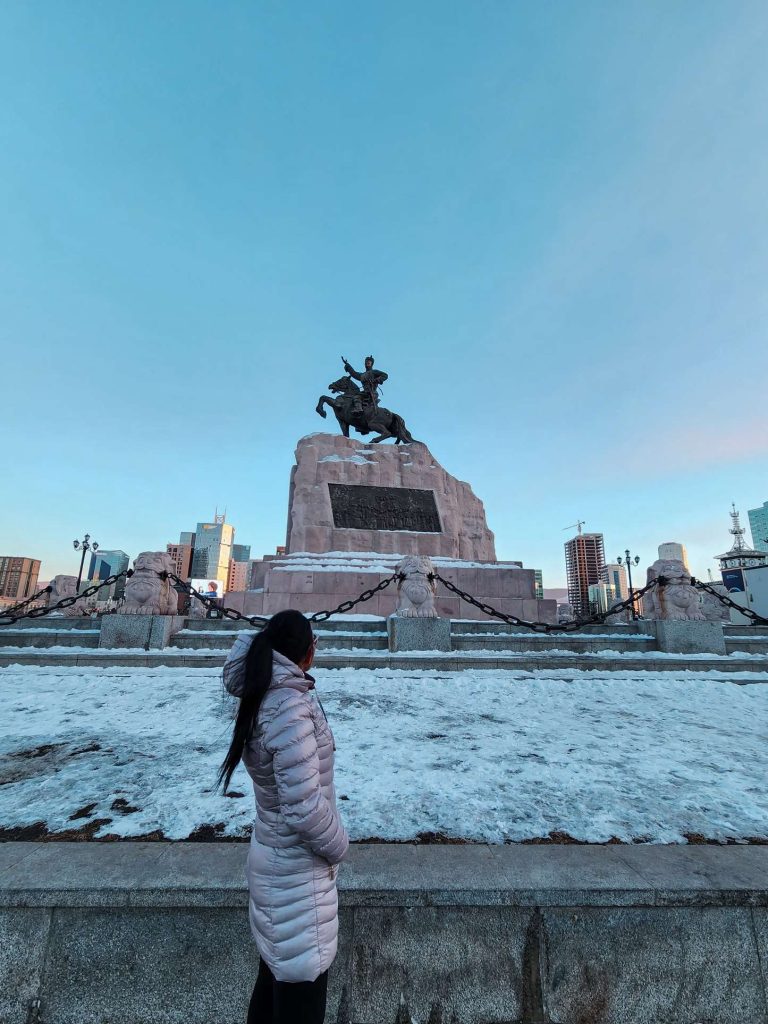
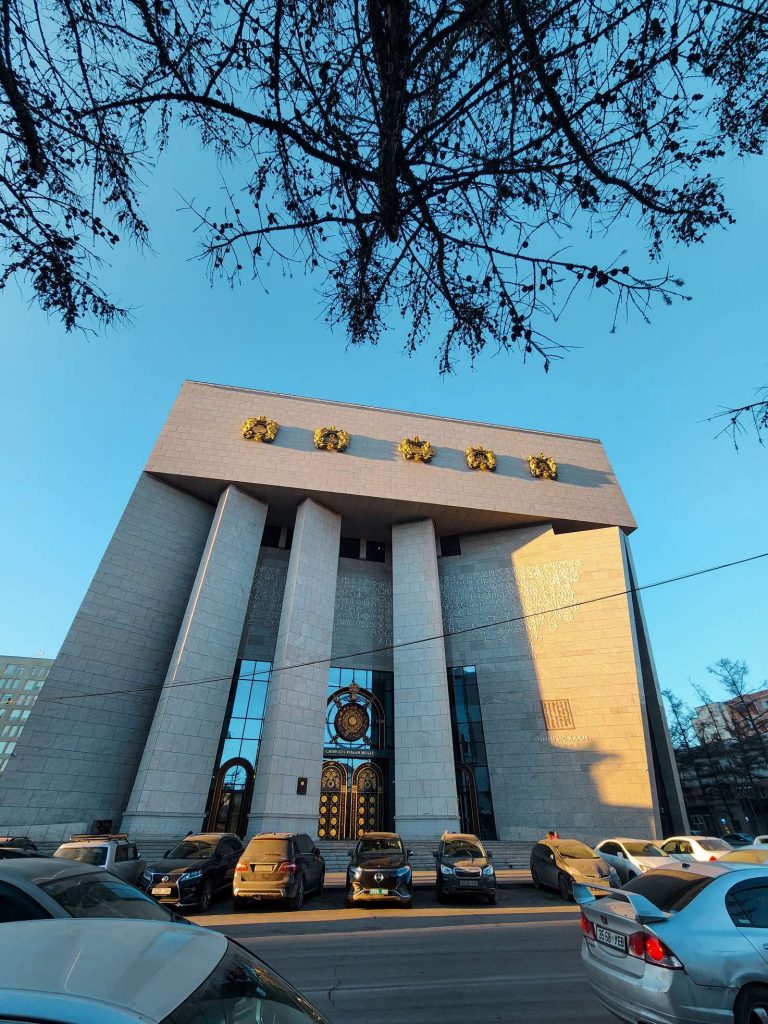
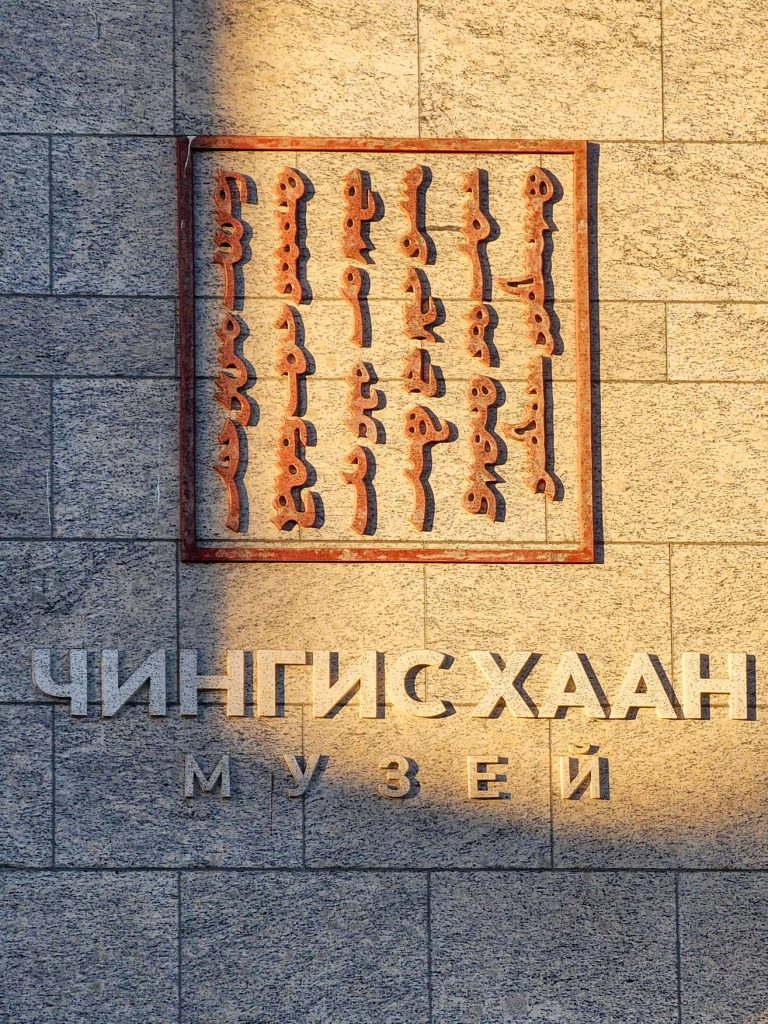
I began my day with a visit to Gandantegchinlen Monastery, one of the most significant Buddhist monasteries in Mongolia. The monastery’s peaceful atmosphere and stunning architecture provided a serene start to the day. You can witness the intricate details of the temples and the devotion of the monks as they went about their daily rituals.
After that I immersed myself in Mongolian history and culture at the National Museum of Mongolia. The museum’s exhibits offered a comprehensive overview of Mongolia’s rich heritage, from its ancient past to its modern-day developments. I learned about the country’s nomadic traditions, its history as an empire, and its struggles for independence.
As the day went on, I took a leisurely stroll through Sukhbaatar Square, the heart of Ulaanbaatar. The square was bustling with activity, with locals and tourists alike enjoying the vibrant atmosphere. I admired the statues and monuments that lined the square, including the statue of Damdin Sukhbaatar, a key figure in Mongolia’s struggle for independence.
As evening descended, I immersed myself in Mongolian culture with a traditional dinner and cultural show. The dinner, featuring hearty dishes like buuz (steamed dumplings) and khuushuur (fried dumplings), introduced me to the rich flavors of Mongolian cuisine but also reminded of my own Nepali momo (dumpling). The cultural show, showcasing traditional music, dance, and throat singing, offered a glimpse into Mongolia’s vibrant artistic heritage. The day ended with a sense of excitement for the adventures that lay ahead in this enchanting country.
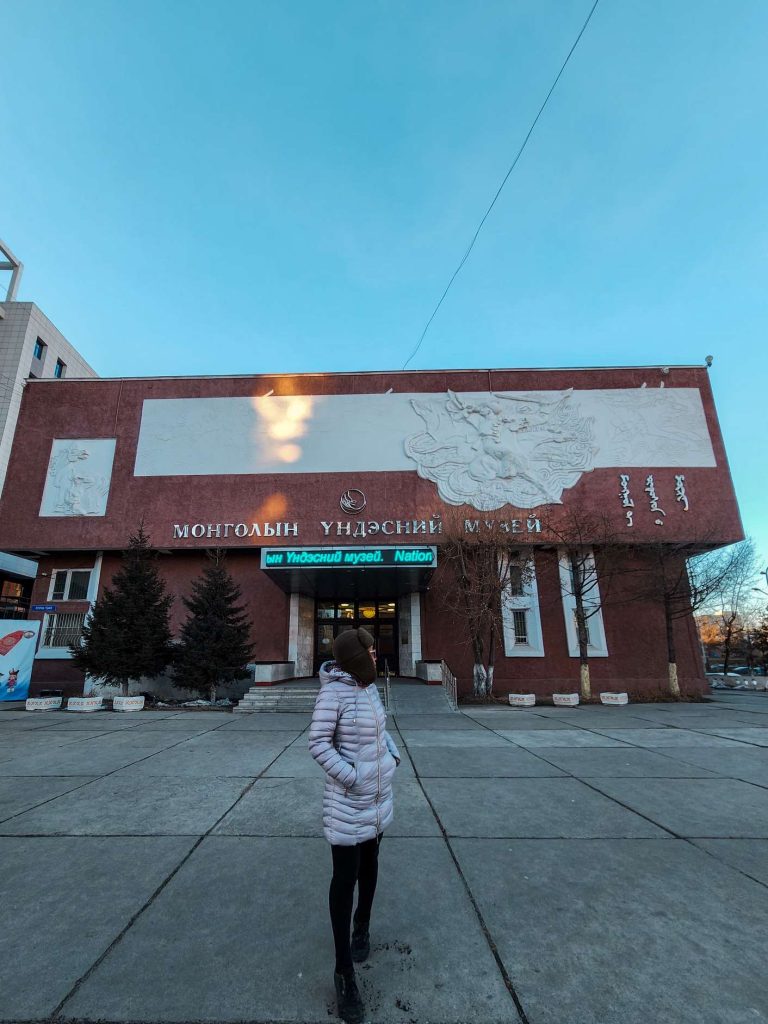
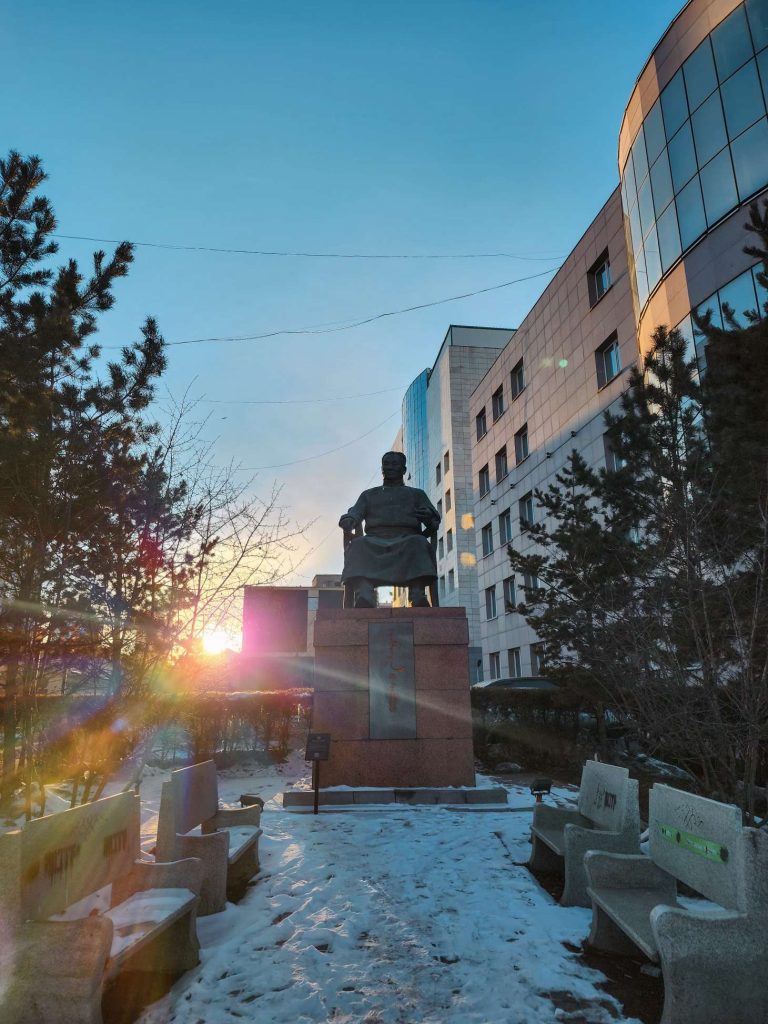
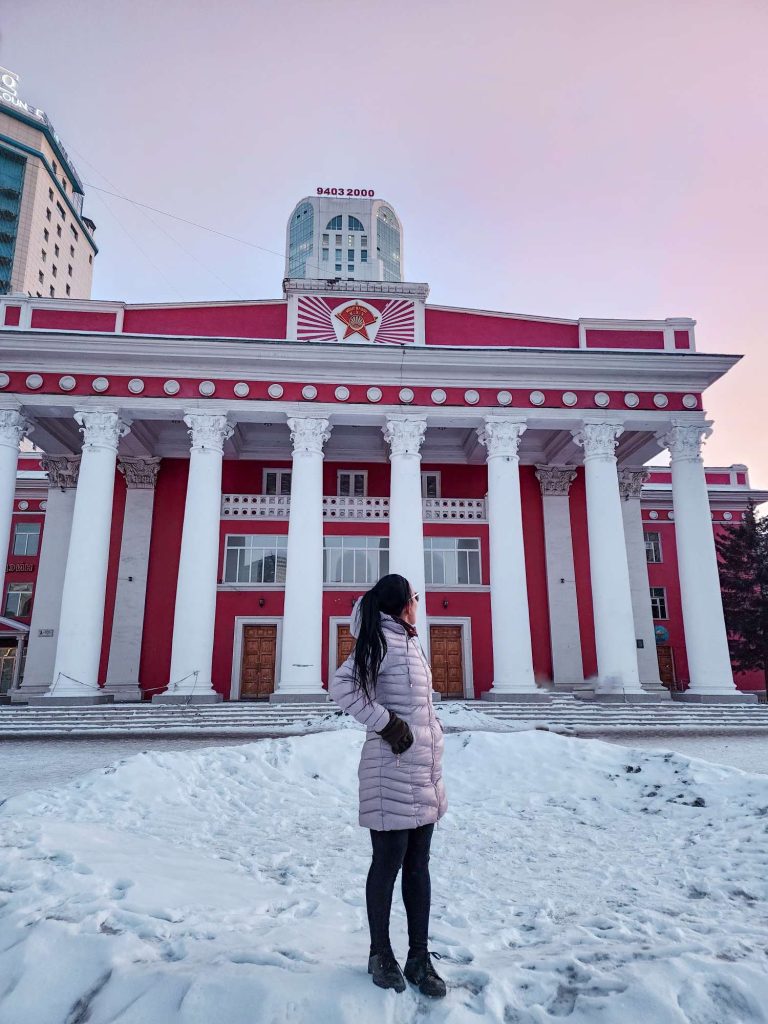
Day 3: Terelj National Park
Excitement filled the air as I embarked on a journey to Terelj National Park, a breathtaking natural paradise located just outside of Ulaanbaatar. The drive itself was a scenic experience, with rolling hills and vast expanses of grasslands stretching out before me.
Upon arrival, I was greeted by the stunning landscapes of Terelj, including the iconic Turtle Rock and Aryabal Meditation Temple. Turtle Rock, a massive rock formation that resembles a turtle, stood majestically against the backdrop of the park’s lush greenery. Aryabal Meditation Temple offered a peaceful retreat, with its serene surroundings and panoramic views of the park. You can also visit the iconic genghis khan Statue, nestled amidst the beautiful natural scenery of the park.
As the sun began to set, I had the unique opportunity to stay overnight in a traditional Mongolian ger (yurt). The ger camp provided a glimpse into the nomadic way of life, with its cozy interior and warm hospitality. Sitting by the campfire under the starry sky, I felt a connection to the land and its people, making my stay in Terelj a truly unforgettable experience. Recommended tour for Terelj National Park.
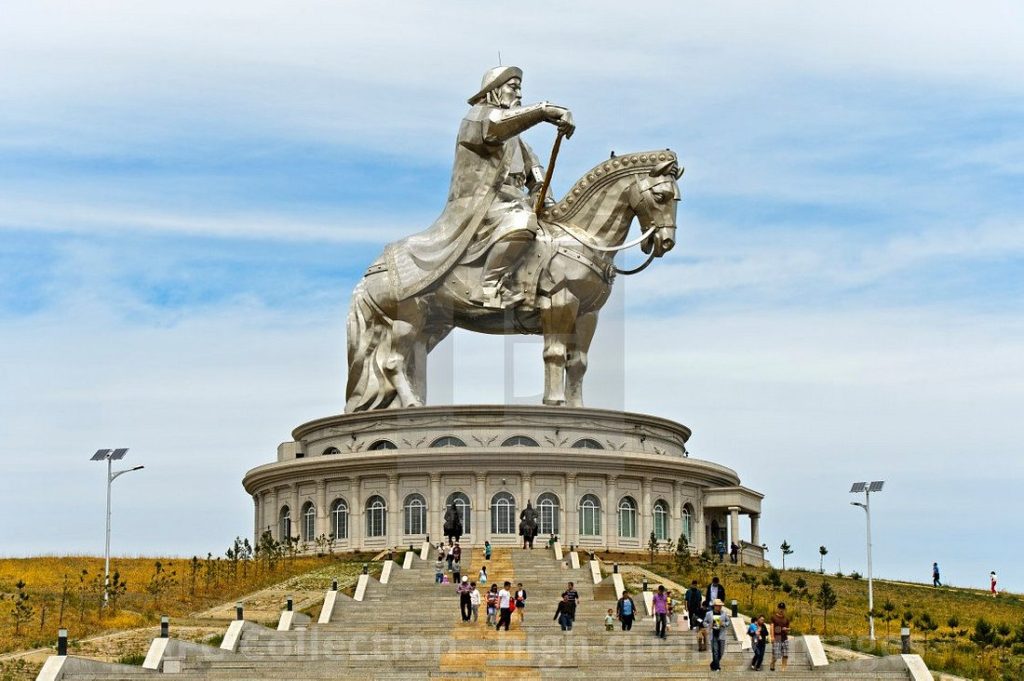
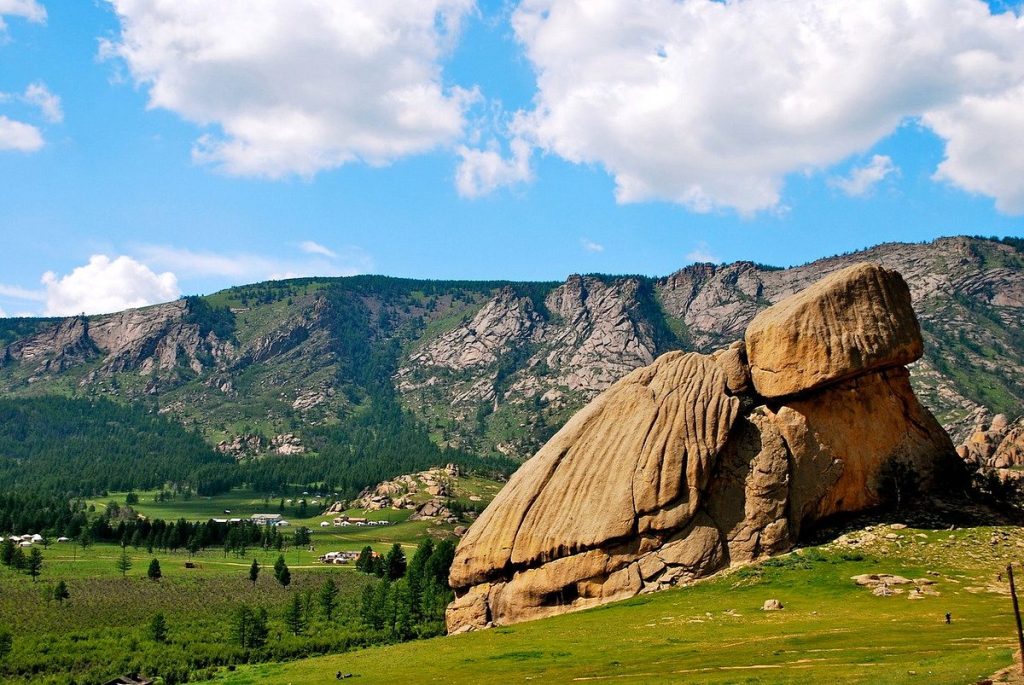

Day 4: Hustai National Park
Morning: The day began with an adventurous journey to Hustai National Park, renowned for its population of wild Mongolian horses, also known as Takhi horses. The drive to the park was scenic, offering glimpses of Mongolia’s vast grasslands and rugged terrain.
Afternoon: Upon arrival, I embarked on a guided tour of the park, eager to catch a glimpse of the iconic Takhi horses. These magnificent creatures, with their sturdy build and unique appearance, are a symbol of Mongolia’s untamed spirit. As I explored the park, I was fortunate to spot several herds of Takhi horses grazing peacefully in their natural habitat, a truly mesmerizing sight. Recommended tour for Hustai National Park.
Evening: As the sun began to set, I bid farewell to the wild horses of Hustai National Park and made my way back to Ulaanbaatar. The evening was a time of reflection, as I relaxed and savored the memories of a day spent in the midst of Mongolia’s natural beauty.
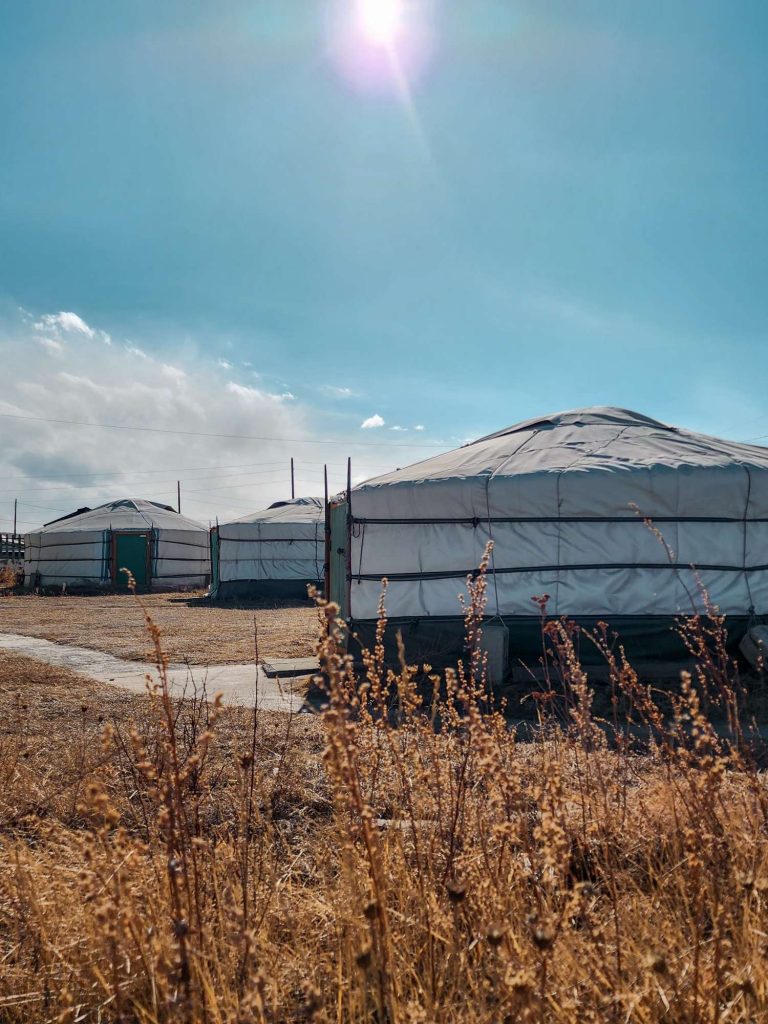
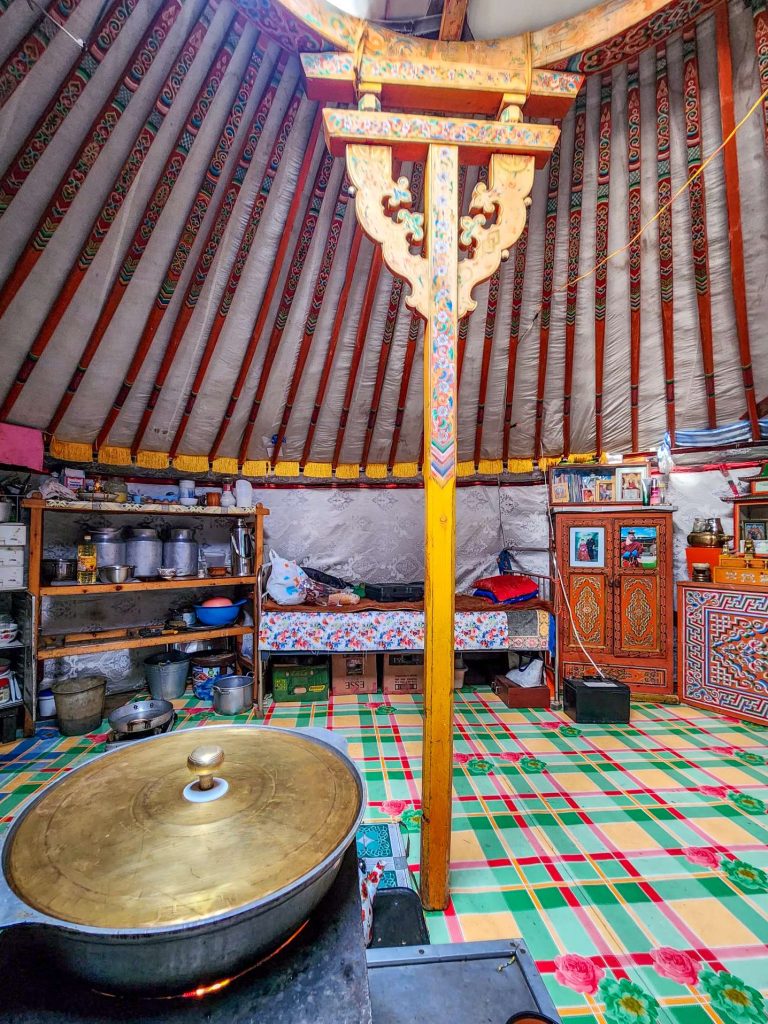

Day 5: Kharkhorin and Erdene Zuu Monastery



Morning: Depart for Kharkhorin, the ancient capital of Mongolia.
I had the privilege of working with amazing Gaya from Gaya’s Guest House for next two-night trip. As a solo traveler, I enjoy meeting people and listening to their stories of perseverance and achievement. Gaya’s story was particularly inspiring. Despite facing many challenges, including language barriers and other obstacles, she pursued her childhood dream of becoming a guide. Over the years, she has welcomed many travelers to her guesthouse, helping them plan their Mongolian adventures. Gaya not only offers accommodation but also assists in creating tailored itineraries, making her guesthouse a hub for travelers seeking a personalized experience in Mongolia.
Safety is paramount for me as a solo female traveler, and Gaya ensured that I felt safe and at home throughout my stay. She provided warm hospitality, delicious and healthy meals, and the opportunity to experience authentic nomadic life by staying with a local nomadic family and sharing staple nomadic meals and milk tea.
Afternoon: Upon arrival in Kharkhorin, I visited gaya’s guest house which was well located in town, clean, and offered accommodation not only in house but also in gers. After that, I visited Erdene Zuu Monastery, the oldest Buddhist monastery in Mongolia. The monastery’s architecture and serene surroundings offered a glimpse into Mongolia’s rich spiritual heritage. It felt good to be around there although toilet was a basic one w hole in the ground (monastry was building new ones tho).
After spending some time in peaceful Monastry I walked over to Kharakhorum Museum which was merely 10 mins walk. The museum provided an in-depth look into the history of Kharkhorin and the Mongolian Empire, with artifacts and exhibits detailing the city’s significance as the capital of the empire. I enjoyed the video demonestration of 3 seprate tombs they found underground, it was pretty impressive.
Then Gaya & her friend drove me to the ruins of Kharkhorin up on the hills, once the capital of the Mongolian Empire in the 13th century. I learned about the city’s history and its significance as a cultural and political center.
Additionally, during the journey to Kharkhorin, we made a stopover in the mini Gobi Desert. This brief detour allowed me to appreciate Mongolia’s diverse landscapes, from the vast grasslands to the sandy dunes of the desert.
We then drove to Orkhon Valley National Park- Orkhon Waterfall, which is 130 km far from Kharkhorin. It took 3 hours by car. Gaya had prepared all meals for the trip so I didn’t go hungry which is always nice.
On the way, we stooped to appreciate and take photos of the Mongolian longest river which is named Orkhon and saw one of the stunning Pink sunsets ever!
Then finally we arrived at a local nomadic family’s traditional ger where we stayed the night. I had private ger but we all had dinner together. I got meet the parents and their son and all were hospitable and kind. There was a language barrier so Gaya helped transate some questions which I appreciated.
As the day came to a close, I reflected on the history, culture, and local nomadic Mongolian life I had just experienced, grateful for the opportunity to witness Mongolia’s past and present intertwine. And went to bed with warmth of the fire next to me, looking forward to my anticiapted Mongolian waterfalls in the morning!
Day 6: Orkhon Waterfall and Mini Gobi Desert
Recommended tour organiser for Kharkhorin, Orkhon Waterfall and Mini Gobi Desert is Gaya’s Guest house.
Morning: I was accompanied by a local family’s son who kindly offered to guide me to the waterfall. It was my first encounter with frozen waterfalls! a sight that left me in awe. Waterfalls may not be the first thing that comes to mind when thinking of Mongolia, but this stunning natural wonder had to be on my itinerary. Thanks to Gaya’s Guesthouse for bringing this unique experience to life, even in its frozen state.
Orkhon Valley National Park, home to the impressive Orkhon Waterfall is formed by volcanic eruptions and earthquakes around 20,000 years ago, the waterfall cascades from a height of 20 meters and spans 10 meters in width. Despite the cold, the waterfall’s beauty was undeniable, set against a backdrop of rocks and vast empty grounds.
There was option to do various activities such as hiking, seeing yaks, and horse riding too, providing a glimpse into the diverse wildlife of Mongolia.
Then it was time for breakfast and we were on our way to staying a night in Mini Gobi Desert.
We explored the Mini Gobi Desert, a unique landscape within the Khugnu Khaan Natural Reserve. This area featured mountains, forests, steppes, semi-Gobi desert landscapes, and mineral water sources, all in one location which was pretty cool to see.
I stayed overnight in a traditional Mongolian ger arranged by Gaya, hosted by a local family. I met the husband and wife and their cute lil daughter, went for sunset hike and had dinner together with them. The surrounding area was perfect for trekking, climbing, and camel riding, offering a true taste of Mongolia’s natural beauty and hospitality.
Day 7: Return to Ulaanbaatar
Morning: The journey back to Ulaanbaatar from the Gobi Desert was a time of reflection, as I marveled at the vastness and beauty of Mongolia’s landscapes one last time. The long drive offered a peaceful transition from the wilderness back to the bustling city.
Afternoon: Upon arrival in Ulaanbaatar, I visited the Bogd Khan Winter Palace Museum, a testament to Mongolia’s royal history. The museum showcased the extravagant lifestyle of the Bogd Khan, the last emperor of Mongolia, with displays of his lavish costumes, artifacts, and living quarters. It was a fascinating glimpse into Mongolia’s rich cultural heritage.
Evening: In the evening, I enjoyed a little farewell dinner, reflecting on my incredible journey through Mongolia. It was cool to have met a french ice sculptor, 2 germans and 1 brazilian and couple other solo travelers which added to my unforgettable Mongolian experience, from staying in traditional Mongolian gers to exploring ancient monasteries and natural wonders. I was grateful for the warm hospitality of Gaya, host families and the people I had met along the way and the memories that would stay with me forever. As I prepared to leave Mongolia, I hope that this would not be my last visit to this beautiful and enchanting country.
Mongolia travel guide
How to get to Ulaanbattar?
To get to Ulaanbaatar, the capital of Mongolia, you have several options:
- By Air: Chinggis Khaan International Airport (ULN) in Ulaanbaatar is the main international airport in Mongolia. You can fly to Ulaanbaatar from various cities around the world, including Beijing, Seoul, Moscow, and Istanbul, among others. Several airlines operate flights to Ulaanbaatar, including MIAT Mongolian Airlines, Aeroflot, Turkish Airlines, and Korean Air.
- By Train: The Trans-Mongolian Railway connects Ulaanbaatar with Beijing in China and Moscow in Russia. The journey from Beijing to Ulaanbaatar takes about 30 hours, while the journey from Moscow takes around 4 days. The train offers a scenic route through the Mongolian countryside and is a popular option for travelers seeking an adventurous journey.
- By Bus: Ulaanbaatar is connected to neighboring countries such as Russia and China by bus. However, these bus journeys can be long and arduous, often taking several days to complete.
- By Car: You can also reach Ulaanbaatar by car, either by driving yourself or hiring a driver. However, keep in mind that Mongolia’s road infrastructure is not as developed, especially outside of major cities, so this option requires careful planning and preparation.
Overall, flying is the most convenient and fastest way to reach Ulaanbaatar, but traveling by train or bus can offer a more adventurous and scenic journey.
What are must try food in Mongolia?

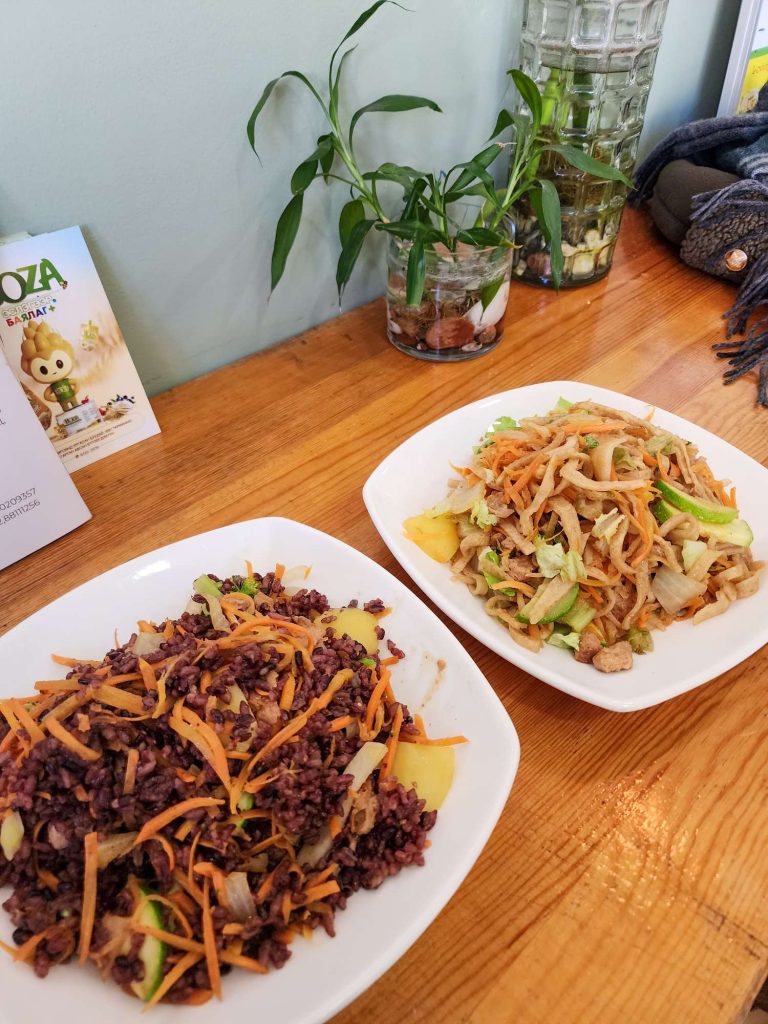
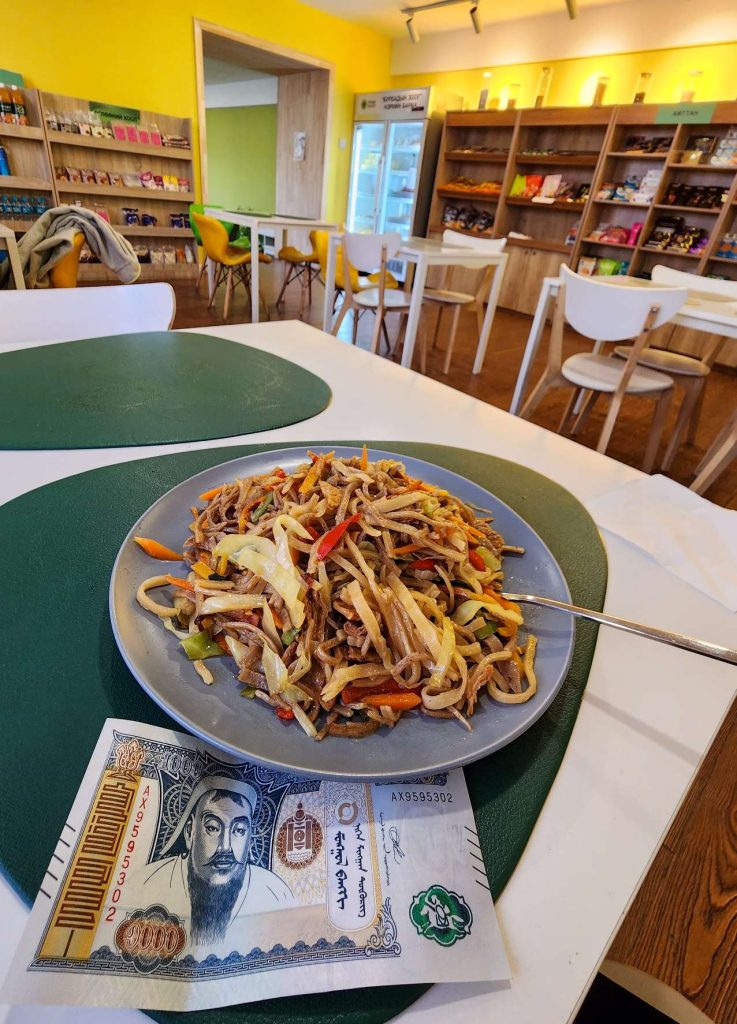
When i arrived I was anticiapting on meals being all meat based with horses and camel etc but on my first few days I met a fellow solo traveller who was vegan! so I ended up going for tons of vegan food but during my over night trips organised by Gaya I had the opportunity to try traditional meals also.
So, there are several vegan restaurants where you can enjoy delicious plant-based meals. Some of the popular ones include:
- Loving Hut: A global chain of vegan restaurants, Loving Hut offers a variety of vegan dishes, including soups, salads, and main courses.
- Govinda’s Vegetarian Restaurant: Known for its vegetarian and vegan-friendly menu, Govinda’s offers a range of dishes inspired by Indian and Mongolian cuisine.
- Ananda’s Vegan: This cozy vegan restaurant offers a selection of dishes made from fresh, locally sourced ingredients.
- Vegetarian Gobi: Another great option for vegan and vegetarian meals, Vegetarian Gobi serves up tasty and healthy dishes that cater to various dietary preferences.
Some traditional Mongolian dishes that you can try if you’re not vegan include:
- Buuz: Steamed dumplings filled with meat (usually mutton or beef) and onions.
- Khuushuur: Deep-fried meat-filled pastries, similar to buuz.
- Tsagaan idee: A dish made with noodles, meat, and vegetables, often served as a soup.
- Borts: Dried meat, usually mutton, that can be eaten as a snack or added to soups and stews.
And here are some non-vegan restaurants where you can find these dishes:
- Modern Nomads: Known for its traditional Mongolian cuisine, Modern Nomads offers a variety of dishes, including buuz (steamed dumplings), khuushuur (deep-fried meat-filled pastries), and tsuivan (stir-fried noodles with meat and vegetables).
- Bd’s Mongolian Grill: While not a traditional Mongolian restaurant, Bd’s Mongolian Grill offers a create-your-own stir-fry experience where you can choose from a variety of meats, vegetables, and sauces to be cooked on a large, flat grill.
- Monet Restaurant: Monet Restaurant offers a mix of Mongolian and European dishes, including traditional Mongolian barbecue and other meat-based dishes.
- Millie’s Cafe: Millie’s Cafe is known for its cozy atmosphere and serves a variety of dishes, including Mongolian-style hot pot and grilled meats.
What are popular drinks to try in Mongolia?
Mongolia offers a few unique and popular drinks that you should try:
- Airag: This is a traditional Mongolian drink made from fermented mare’s milk. It has a slightly sour taste and is often enjoyed during special occasions or festivals.
- Suutei tsai: This is a traditional Mongolian tea made with milk, water, salt, and sometimes butter. It is often served as a welcoming drink to guests and is known for its rich and savory flavor.
- Shimiin arkhi: This is a type of Mongolian vodka made from fermented milk. It is known for its strong flavor and is often served on special occasions or as a traditional remedy for various ailments.
- Mongolian tea: This is a herbal tea made from various herbs and plants native to Mongolia. It is believed to have medicinal properties and is often enjoyed for its soothing and refreshing qualities.
These drinks offer a unique taste of Mongolian culture and are worth trying during your visit to Mongolia.
Local Currency in Mongolia
The local currency in Mongolia is the Mongolian Tugrik (MNT). The symbol for the Tugrik is “₮” and it is abbreviated as “MNT”. The Tugrik is subdivided into 100 möngö (мөнгө).
When traveling to Mongolia, it’s advisable to exchange some currency upon arrival at the airport or in major cities like Ulaanbaatar. While credit cards are accepted in some establishments, cash is still widely used, especially in rural areas and for smaller purchases.
Is Mongolia safe to travel alone?
Mongolia is generally considered safe for travelers, including solo travelers. However, like any destination, it’s important to take common-sense precautions to ensure your safety:
- Crime: Mongolia has a relatively low crime rate, but petty crime like pickpocketing and theft can occur, especially in crowded areas and tourist spots. Keep your belongings secure and be aware of your surroundings.
- Health and Safety: Mongolia is a vast country with diverse landscapes, so it’s important to take precautions for your health and safety. Carry adequate water and food when traveling in remote areas, and be prepared for changes in weather conditions.
- Communication: English is not widely spoken outside of Ulaanbaatar and tourist areas, so it’s helpful to learn some basic Mongolian phrases or carry a phrasebook. Download Mongolian & Russian on google transator.
- Transportation: Use reputable transportation services and avoid traveling alone at night, especially in remote areas.
Overall, with proper preparation and awareness, Mongolia can be a safe and rewarding destination for solo travelers.
Best time to visit Mongolia
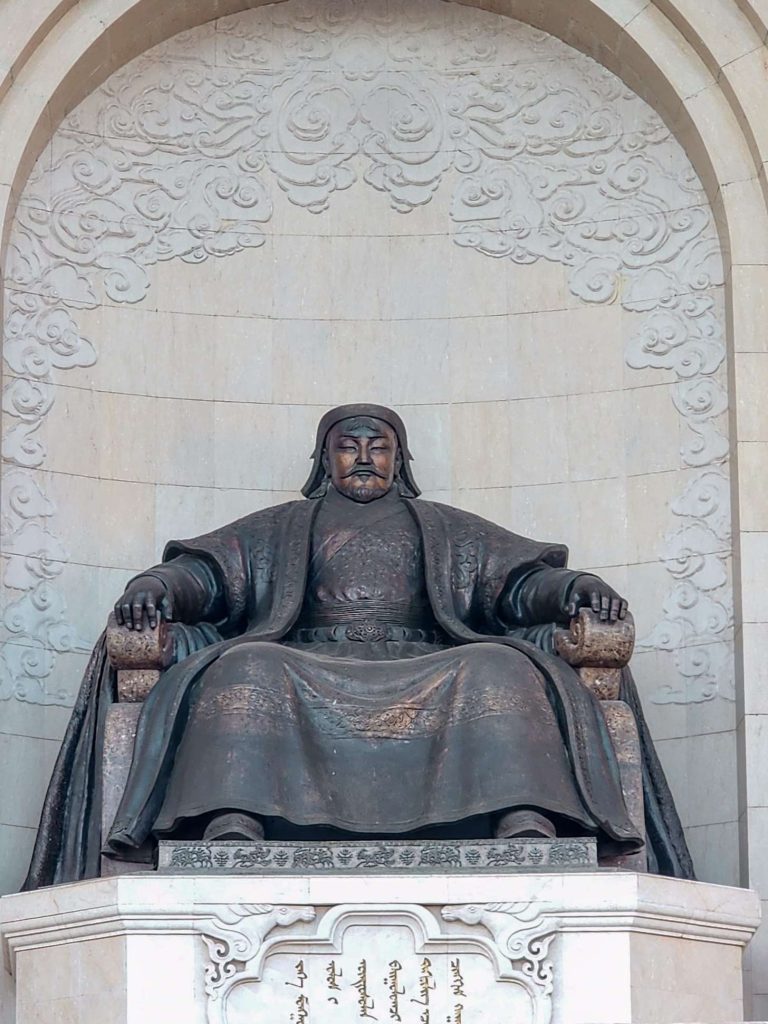


The best time to visit Mongolia depends on your interests and what you want to experience. Here’s a breakdown of the seasons:
- Summer (June to August): This is the peak tourist season in Mongolia. The weather is warm and pleasant, with temperatures ranging from 20°C to 30°C (68°F to 86°F). This is a great time for outdoor activities such as hiking, horseback riding, and camping. The Naadam Festival, Mongolia’s biggest cultural event, also takes place during this time.
- Spring (April to May): Spring is a beautiful time to visit Mongolia as the landscape starts to turn green, and wildflowers begin to bloom. The weather is mild, but there can still be some snow in higher elevations. It’s a good time for bird watching and seeing baby animals.
- Autumn (September to October): Autumn is another excellent time to visit Mongolia. The weather is still mild, and the fall colors make for stunning landscapes. It’s a good time for hiking and photography. The crowds are also smaller compared to the summer months.
- Winter (November to March): Winter in Mongolia is cold, with temperatures often dropping below freezing. However, if you’re interested in winter sports like skiing or dog sledding, this can be a great time to visit. The winter landscapes, with snow-covered plains and frozen rivers, are also incredibly beautiful.
Overall, the best time to visit Mongolia depends on what you want to do and see. If you’re interested in outdoor activities and festivals, summer is the best time to go. If you prefer milder weather and smaller crowds, spring and autumn are ideal.
Which sim card to buy in Mongolia?
When visiting Mongolia, you can purchase a local SIM card to use in your phone for calls, texts, and data. The two main mobile operators in Mongolia are Mobicom and Unitel, both of which offer prepaid SIM cards that you can buy at their stores, official retailers, or at the airport. Here’s a general overview of each operator’s offerings:
- Mobicom: Mobicom is the largest mobile operator in Mongolia and offers good coverage in most parts of the country. They offer a variety of prepaid SIM card options, including data-only SIMs for internet access and combined voice and data SIMs. Mobicom SIM cards can be purchased at Mobicom stores and authorized resellers.
- Unitel: Unitel is another major mobile operator in Mongolia and also offers good coverage. They offer prepaid SIM cards with various data and voice packages. Unitel SIM cards can be purchased at Unitel stores and authorized resellers.
Before purchasing a SIM card, make sure your phone is unlocked and compatible with the GSM network, which is used in Mongolia. Additionally, be aware that while major cities and tourist areas usually have good coverage, remote areas may have limited or no coverage.
Alternatively, go for the esim which you can buy now and set it up ready to go. Check below to purchase on trusted Get Your Guide
I hope this Mongolia travel itinerary was helpful.
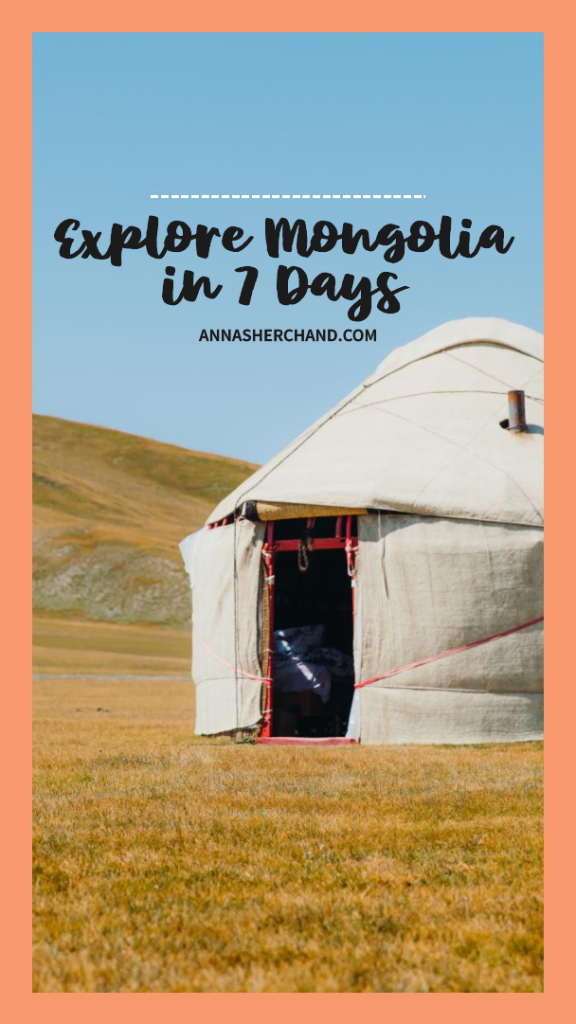

Let me know in the comments:
If you have any questions about 7 days Mongolia travel itinerary
3 days in Kuala Lumpur itinerary
7 days in Tajikistan itinerary
Venezuela itinerary and travel tips
5 days in Uruguay itinerary
Solo travel to Almaty, Kazakhstan itinerary
Backpacking Paraguay itinerary and travel tips
10 Days Thailand Itinerary
Solo trip to Peru One month itinerary
Solo female travel Colombia
7 days backpacking in Ecuador itinerary
Solo female travel to Georgetown Guyana
5 days in Oaxaca itinerary
2 days in Mexico City itinerary
7 Days Itinerary in Georgia
4 Days in Azerbaijan Itinerary
Best places to visit from Split
2 days in Split, Croatia
Solo traveling to Mostar
Solo female travel to Kotor
Solo female travel to Budva
Solo female travel Albania
Warsaw by Train covers warsaw travel tips
Check out One day in Luxembourg, western Europe
Day trip from Zurich to Liechtenstein
Travel tips to South America
Fiji solo travel guide
Australia east coast must-see
Backpacking in Melbourne, Australia
Digital nomad guide to Melbourne
14 best area to stay in Melbourne CBD
Master Sydney travel guide
Solo travel guide to Brisbane
Exploring Adelaide the best way is a must-read
Important travel tips for Uluru trip
Melbourne day trips in winter
Day Hikes in Melbourne
Weekend getaway? Check out things to do in Ballarat
Perth solo itinerary
Top 5 must do in Darwin, Australia
How to go from Dublin to Howth
Solo female travel Romania
Read a recent day trip to Zaanse Schans from Amsterdam
How about a solo itinerary to Canberra– Australia’s capital city?
Solo trip to Peru, travel tips to South America
Solo travel to Copenhagen, Denmark
Check out the 7 days Hanoi travel guide.
Book accommodation through trusted Booking.com
I have detailed travel resources right here. Save money, learn what and how.
If you like this article, follow my adventures on Instagram, Facebook, YouTube, Twitter, and Pinterest, or read about me travel blogger from Australia but most importantly sign up to my e-mail list to keep up with updates and travel posts!

